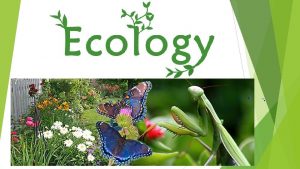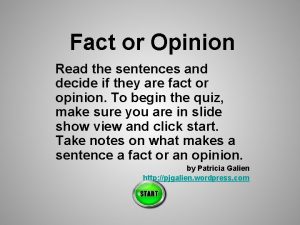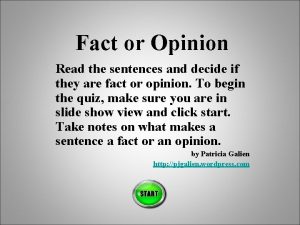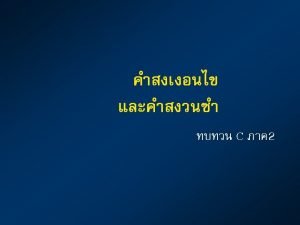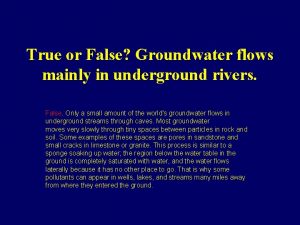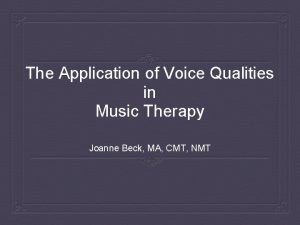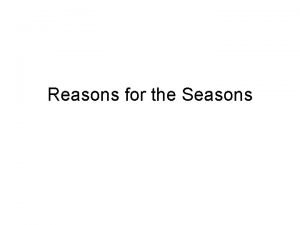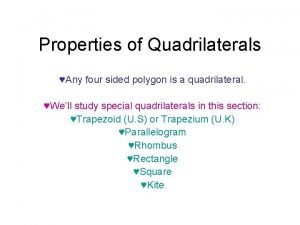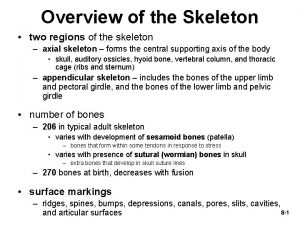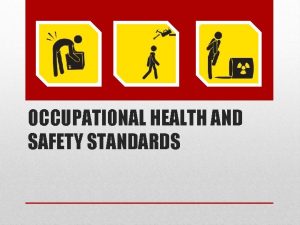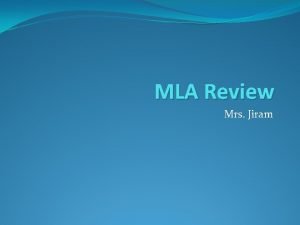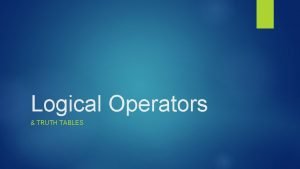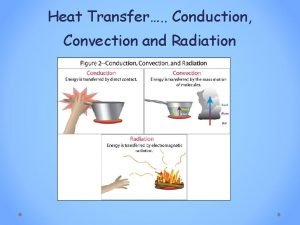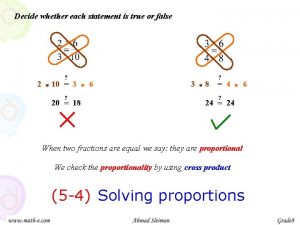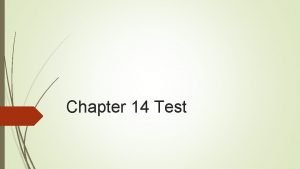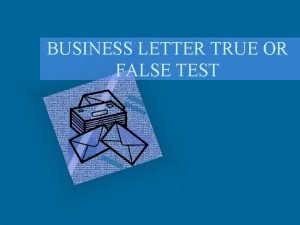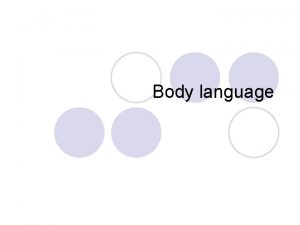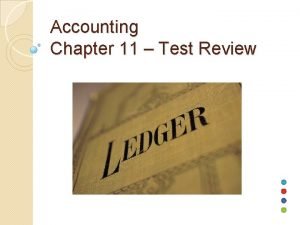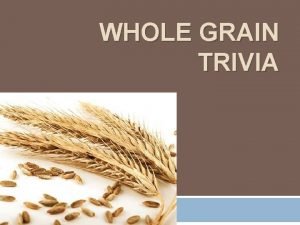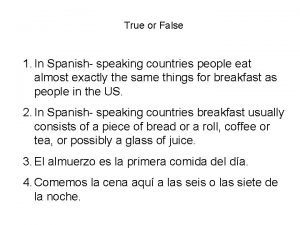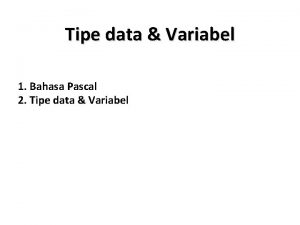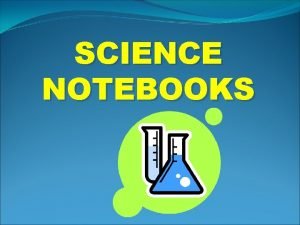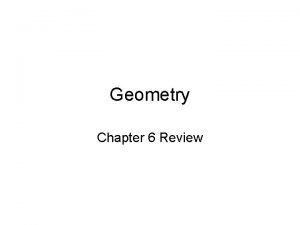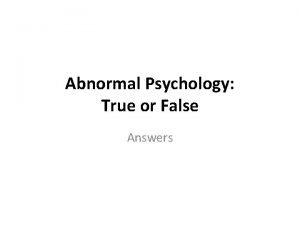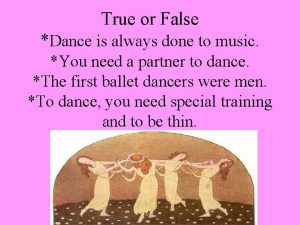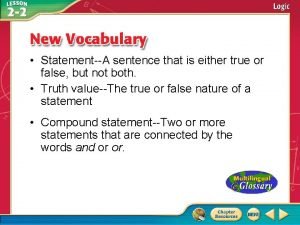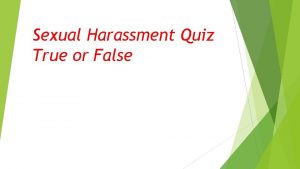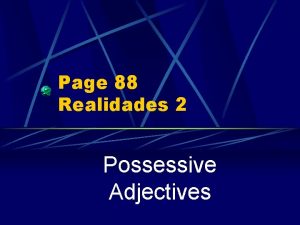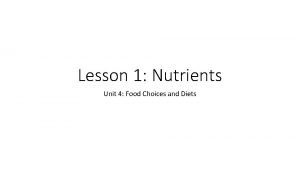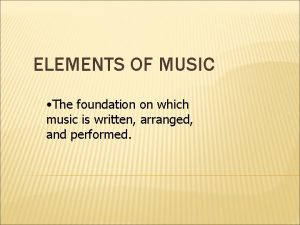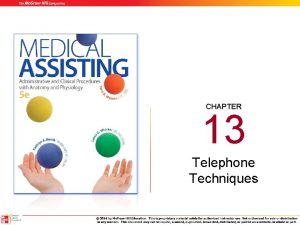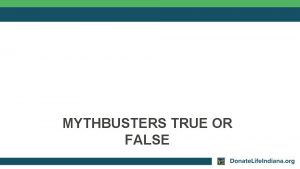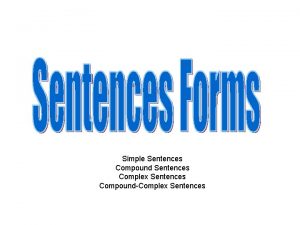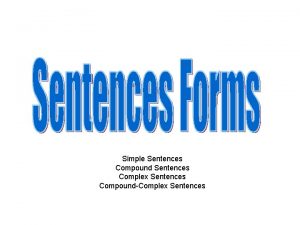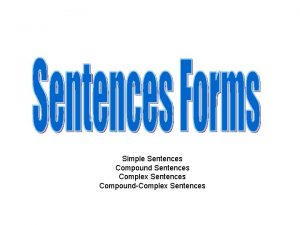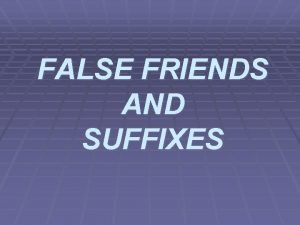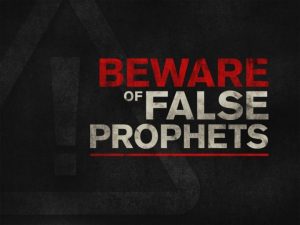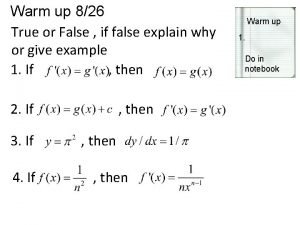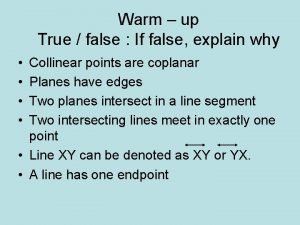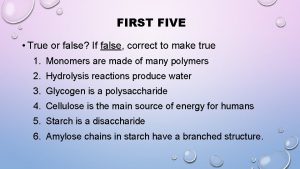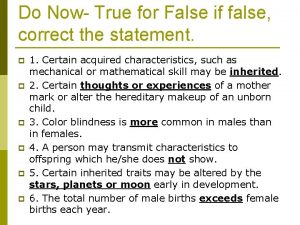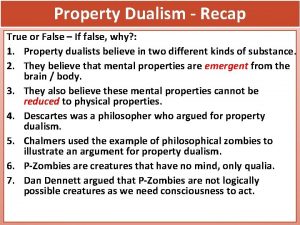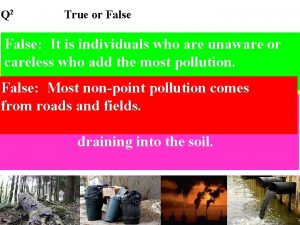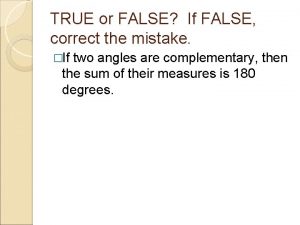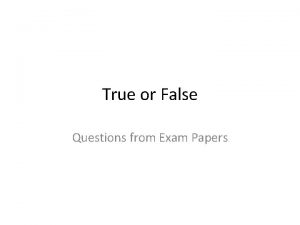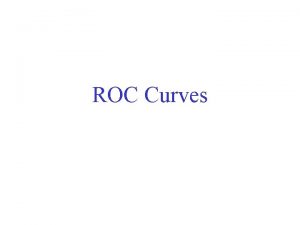Are the following sentences TRUE T or FALSE


















































- Slides: 50


Are the following sentences TRUE (T) or FALSE (F)? _____ 1. The biosphere is the part of the Earth that contains all living beings. ____ 2. There is more than one biome in Florida. _____ 3. Ecosystems have to be very big to be able to be called ecosystems. _____ 4. In ecosystems living beings do not affect the non living part, but the non living part can affect living beings.

Spheres of the Earth

-What is the BIOSPHERE? -Why is it said that the biosphere is dynamic?

Example: Cutting ants How do they change the environment? https: //www. youtube. com/watch? v=-6 o. KJ 5 FGk 24


In what way are they related? (You have 3 minutes to come up with 2 examples)

Levels of organization • INDIVIDUAL organism. • Individuals that belong to the same species and live in the same area are called POPULATION. • Different population that live together in an area are called COMMUNITY. • An ECOSYSTEM includes all the organisms that live in a particular place, together with their physical environment. • A group of ecosystems that have similar climates and organisms is called BIOME.

Biomes of the world What do you think each biome of the world differs in? (Write down some answers with a pencil, watch the video, and then correct with a pen if necessary…) https: //www. youtube. com/watch? v=h. Iy 0 Zly. PPDg

Biomes of the world A BIOME is a group of ecosystems that have similar climates and organisms. EACH BIOME differs in: -Climate -Elevation -Rain -Fresh water -Salt water


Elements of an ecosystem


Explain some abiotic and biotic factors of this pond ecosystem

Look for possible biotic and abiotic factors

So, are abiotic and biotic factors influenced by each other?

STARTING ACTIVITY: Look at these photos and explain: 1. A relationship between a biotic and an abiotic factor. 2. How ecology, society and economy are related.

https: //www. youtube. com/watch? v=HPr. Pt. Cns 5 Lc THE EVERGLADES ECOSYSTEM https: //www. youtube. com/watch? v=Of. H 22 c. Jc 8 uw

Energy, producers and consumers Organisms interact with the environment in order to obtain ENERGY. Why do living beings need to obtain energy? NOT ONE LIVING ORGANISM CAN CREATE ENERGY!

Autotrophs They capture energy from sun light (or chemicals) to produce organic matter that living cells can use. They are also called PRIMARY PRODUCERS.

Autotrophs PHOTOSYNTHESIS They capture energy from sun light to produce organic matter that living cells can use. They are also called PRIMARY PRODUCERS.

In the search of life outside our planet, why do you think they are looking for an atmosphere with oxygen? Where does all the oxygen from our atmosphere come from?

Autotrophs CHEMOSYNTHESIS They capture energy from chemical substances to produce organic matter that living cells can use. They are also called PRIMARY PRODUCERS.


Heterotrophs They rely on other organisms in order to obtain their food. They are also called CONSUMERS.

Classification of living beings depending on what they eat. Herbivores Carnivores Ommnivores Detritivores Decomposers Scavengers In pairs, define each one and try t o put an e xample.

Classification of living beings depending on what they eat. Herbivores Carnivores Eat plants leaves, roots, seeds or fruits. Kill and eat other animals which are called “prays. ” Ommnivores Detritivores Feeds on detritus particles. Examples: Worms, snails, shrimps, crabs, etc Decomposers Scavengers Eat a variety of plants and animals. Such as bacteria and fungi. Feed by chemically breacking down organic matter into nutrients. They consume the flesh of other animals that have been killed by others.

Energy flow in ecosystems Energy flows from the “eaten” to the “eater”. ENERGY FLOWS THROUGH AN ECOSYSTEM IN A ONE-WAY STREAM; ALWAYS FROM PRIMARY PRODUCERS TO VARIOUS CONSUMERS.

FOOD CHAINS There a series of steps in which organisms transfer energy by eating or being eaten. (They can vary in lenght. )

FOOD WEBS When animals eat more than one kind of food, it is going to be more complicated than a food chain. So, FOOD WEBS appear.

FOOD CHAIN and FOOD WEB OF THE EVERGLADES

FOOD CHAINS and FOOD WEBS OF THE EVERGLADES Look at the food web on page 75 and answer: 1. Extract three different food chains. 2. Decomposers and detritivoes in Food Webs are as important as consumers…. WHY? 3. Which species are autotrophs? Why? 4. Looking at the different types of animals, of which species are we going to have a bigger population? Why? 5. Construct a piramid with producers, primary consumers, secondary consumers and tertiary consumers (with names of the animals, and drawings) 6. What would happen if there is contamination in freswater? Explain with detail.

Food webs and disturbance


Trophic levels and ecological pyramids

Pyramids of energy They show the relative amount of energy available in each trophic level of a food chain or food web.

Pyramids of biomass Biomass: Total amount of living tissue in a trophic level. It´s measured in grams of organic matter per unit of surface.

Pyramids of numbers Shows the relative amount of individual organisms at each trophic level in an ecosystem.




CYCLES OF MATTER C, H, N and O are the basic elements that form living beings. (Sulphur and phosphorous) These atoms are form the BASIS OF LIFE: Water, Carbohydrates, Lipids, Nucleic acids and proteins. WHERE DO THESE ESENTIAL ELEMENTS COME FROM? Unlike the ONE-WAY flow of energy, MATTER IS RECYCLED WITHIN AND BETWEEN ECOSYSTEMS. ELEMENTS PASS FROM ONE ORGANISMS TO ANOTHER ONE AND AMONG PARTS OF THE BIOSPHERE THOUGH CLOSED LOOPS CALLED BIOCHEMICAL CYCLES.

CYCLES OF MATTER BIOLOGICAL PROCESSES GEOLOGICAL CHEMICAL HUMAN AS PROCESSES ACTIVITY MATTER MOVES ALONG THESE CYCLES IT IS TRANSFERRED. IT´S NEVER CREATED NOR DESTROYED- JUST CHANGED!!


The Water Cycle

Nutrients cycle The Carbon Cycle The Nitrogen Cycle The Phosphorous Cycle

Nutrient cycles The chemical substances that an organism needs to sustain life are called nutrients. They need them to carry out the vital functions. Like water, NUTRIENTS PASS THROUGH ORGANISMS AND THE ENVIRONMENT THROUGH BIOCHEMICAL CYCLES.

The Carbon Cycle

The Nitrogen Cycle

The Phosphorous Cycle
 Amer rasheed
Amer rasheed Mikael ferm
Mikael ferm Classify the following sentences as true (t) or false (f).
Classify the following sentences as true (t) or false (f). Read the sentences and decide if they take the or not.
Read the sentences and decide if they take the or not. Read the sentences and decide if they take the or not.
Read the sentences and decide if they take the or not. False true
False true Sound waves are electromagnetic waves. true false
Sound waves are electromagnetic waves. true false Most groundwater comes from rain true or false
Most groundwater comes from rain true or false Which of these statements is true?
Which of these statements is true? False and true vocal cords
False and true vocal cords There are four seasons all over the world true or false
There are four seasons all over the world true or false 4 sided polygon
4 sided polygon Percent increase and decrease maze answer key
Percent increase and decrease maze answer key Difference between true ribs and false ribs
Difference between true ribs and false ribs Use excessive force if things don't quite slip into place
Use excessive force if things don't quite slip into place True or false: mla requires a title page.
True or false: mla requires a title page. Logical operators in boolean algebra
Logical operators in boolean algebra True or false questions about leadership
True or false questions about leadership Radiation travels in straight line. (true/false)
Radiation travels in straight line. (true/false) Identify each statement as either true or false.
Identify each statement as either true or false. Decide whether the statement is true or false.
Decide whether the statement is true or false. Chapter 41 telephone techniques
Chapter 41 telephone techniques Accounting chapter 4 study guide true and false
Accounting chapter 4 study guide true and false With the block format, all new paragraphs are indented.
With the block format, all new paragraphs are indented. Body language
Body language Accounting chapter 11 test a
Accounting chapter 11 test a The narrator was brought up mainly in
The narrator was brought up mainly in Multigrain breads are always whole-grain true or false
Multigrain breads are always whole-grain true or false True/false: there are ten spanish-speaking countries.
True/false: there are ten spanish-speaking countries. Pengertian bahasa pemrograman pascal
Pengertian bahasa pemrograman pascal Tipe data logika yang bernilai true dan false ialah
Tipe data logika yang bernilai true dan false ialah True or false science questions
True or false science questions Pub quiz true or false
Pub quiz true or false Chapter 6 geometry review
Chapter 6 geometry review Psychology true or false
Psychology true or false Puffin crossing steady amber
Puffin crossing steady amber Wanted a just right government true'' or false
Wanted a just right government true'' or false Folk dance is always done by music
Folk dance is always done by music Truemaps
Truemaps To kill a mockingbird jeopardy
To kill a mockingbird jeopardy Which sentence diagram shows a compound sentence?
Which sentence diagram shows a compound sentence? Sexual harassment quiz
Sexual harassment quiz True or false: chemical and physical changes alter matter.
True or false: chemical and physical changes alter matter. Capitulo 2a possessive adjectives p.88
Capitulo 2a possessive adjectives p.88 Activity 2 let's review
Activity 2 let's review True or false nutrition questions
True or false nutrition questions True or false?
True or false? 7 elements of music
7 elements of music Ex 2 choose the correct item
Ex 2 choose the correct item Chapter 37 vital signs and measurements
Chapter 37 vital signs and measurements Define a routing list as it pertains to incoming calls
Define a routing list as it pertains to incoming calls


